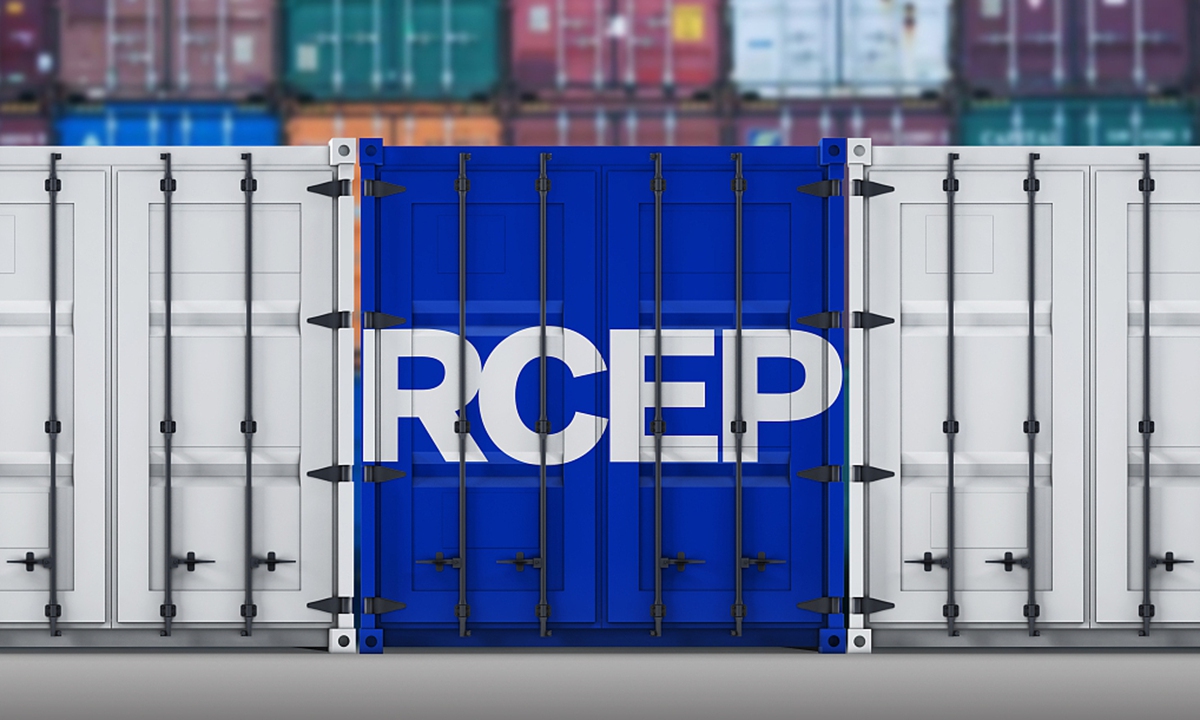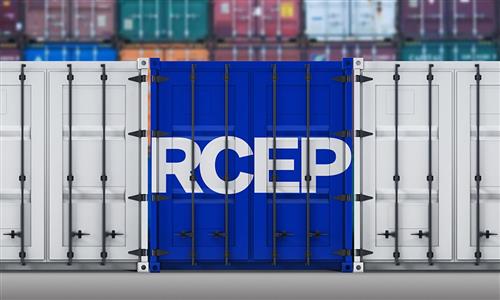
RCEP Photo:VCG
Multiple Chinese cities recorded strong foreign trade figures with Regional Comprehensive Economic Partnership (RCEP) member countries so far in 2024, as the world's largest trade pact has been fully implemented across all 15 members for a full year
The RCEP effectively offers regional countries a stable trade environment, generating a continuing drive force to promote international business activities in the face of external headwinds and challenges, Bai Ming, a research fellow at the Chinese Academy of International Trade and Economic Cooperation, told the Global Times on Thursday.
Since the RCEP entered into full force on June 2, 2023, certificates of origin under the framework have brought benefits to enterprises in terms of tariff reduction and cost savings in foreign trade.
Nanjing Customs in East China's Jiangsu Province issued a total of 113,600 certificates of origin, with a total export value of 33.57 billion yuan ($4.63 billion) which ranked first among all customs in the country. Involved enterprises are estimated to enjoy tariff preferences from other RCEP member countries totaling 503 million yuan, China Media Group reported on Thursday.
In terms of imports, Shanghai Customs has accepted a total of 48,000 RCEP preferential import declarations. The total value of these imports was reported at 40.66 billion yuan, up 45.5 percent year-on-year, while tariff reductions amounted to 1.07 billion yuan, up 70.2 percent year-on-year, ranking first in the country.
The preferential import goods mainly include plastics and related products, machinery and parts, in addition to electrical equipment and components, according to the report.
The system for approving exporters is one area where the RCEP has streamlined trade, allowing approved exporters to issue certificate of origin independently, largely improving declaration efficiency.
A total of 48 enterprises in Jiangsu were confirmed by Nanjing Customs as approved exporters according to RCEP requirements.
The RCEP agreement was signed in November 2020 by the 15 Asia-Pacific countries after eight years of negotiations. It entered into force on the first day of 2022, creating the world's largest trade bloc.
Economies in East Asia and Southeast Asia are the major engine of world's economy growth with strong economic complementarity, and the growth of the RCEP plays a vital role in boosting global economy recovery, Xu Liping, director of the Center for Southeast Asian Studies at the Chinese Academy of Social Sciences, told the Global Times on Thursday.
In the first five months of 2024, China's foreign trade with other RCEP member countries reached 5.11 trillion yuan, a year-on-year increase of 4.5 percent, accounting for over 30 percent of the nation's overall foreign trade, data from China's General Administration of Customs showed.
Xu emphasized that to ensure the steady operation of RCEP, the politization of trade issues as well as "decoupling" from any market players of the region must be avoided. "Bilateral and multilateral business cooperation under the RCEP should be promoted based on market rules, and reduce external impacts from political and securities aspects," he noted.



